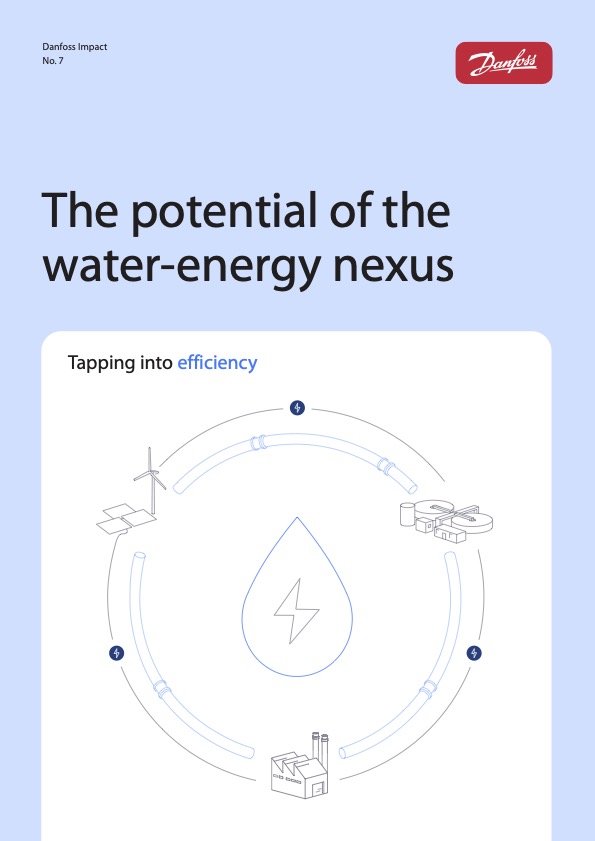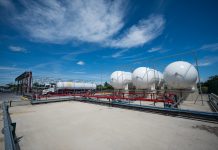Danfoss is calling for greater global attention on the water sector’s energy footprint, noting that addressing inefficiency and waste in the sector can strengthen climate and water security. The water sector currently accounts for approximately 4% of global electricity use, much of which is consumed inefficiently and at unnecessary cost. Addressing this energy waste provides an important opportunity to improve efficiency in the system and reduce operational costs across the sector.
“As the world faces the combination of fresh water scarcity and rising energy demand, we can no longer afford to see these as separate challenges,” said Kim Fausing, President and CEO, Danfoss. “How we use energy in our water system directly impacts the climate, and also carries significant resilience and competitiveness risks.”
Water scarcity is already being worsened by inefficient energy use in the water sector, much of which relies on fossil fuels. The resulting emissions drive global warming, which in turn accelerates water-related crises. By 2040, the sector’s energy consumption is projected to more than double, while the energy sector’s own water demand could rise by nearly 60%. Danfoss urges decision makers to recognise that inefficiencies in the water and energy systems are deeply interconnected and warns that without decisive action, this cycle of waste and vulnerability will only intensify.
Inefficient water production, distribution and consumption are draining the world’s decreasing freshwater resources.
Inefficient technologies and outdated processes mean many industries are consuming water at unsustainable rates. Data centres already use approximately 560 billion litres of water annually, a figure the International Energy Agency projects could double to 1,200 billion litres by 2030. That’s six times the EU’s total freshwater abstraction in 2022. The semiconductor industry faces similar risks. By 2030–2040, 40% of global semiconductor manufacturing sites are expected to be in regions of high or extreme water stress.
This combination of high industrial water demand and regions of water scarcity threatens industrial resilience. The problem is especially pertinent within the context of how vulnerable the world’s freshwater supply is due to global warming and the expected increase in demand: Since 1900, global freshwater use has increased sixfold, and by 2030, the demand could outstrip the supply by 40% globally. Even today, 3.6 billion people lack adequate access to water for at least one month per year.
Solutions to address water and energy waste are readily available
In a new paper released today, Danfoss showcases that many of the technological solutions needed to reduce water and energy waste across all phases of the water cycle already exist. Attention is now needed on investing in these solutions, and it requires bold policy action to turn ambition into reality.
- Desalination: If all existing desalination plants worldwide were retrofitted to operate at the current technological potential (2.0kWh/m³), it could bring financial savings of €34.5 billion and reduce CO₂ emissions by 111 million metric tons.
- Wastewater treatment: Plants can significantly reduce both energy use and operational costs by installing variable speed drives (VSDs), which enable motors and pumps to adjust to real-time demand rather than running at fixed speeds. A plant in Chennai, India, saved roughly 22% of its energy use simply by implementing VSDs. Scaling this potential is essential to meet rising demand.
- Data centres: Liquid cooling of data centres, which operates on a closed water loop, consumes far less water compared to traditional evaporative cooling systems. Direct-to-chip liquid cooling systems are also at least 15% more energy efficient than their air-cooling counterparts.
The financial impact of neglecting the water-energy nexus
Neglecting the connections between the water and energy systems, referred to as the ‘water-energy nexus’, carries significant financial and competitiveness risks. The growing crisis of water scarcity could cause high-income countries to see an 8% reduction in their GDPs by 2050 unless inefficiencies across the water and energy nexus are addressed. That’s more than the UK’s annual spending on the NHS.
Meanwhile, countries are losing significant amounts of treated water in leaky distribution networks. In the US, leaking pipes lost the equivalent of USD $7.6 billion worth of treated water in 2019 – a rate that is expected to increase to USD $16.7 billion by 2039. Investments in existing solutions such as sensors, pumps, and variable speed drives can reduce water loss and increase the energy efficiency of water distribution networks.
“Above all, we need a shift in perspective among policymakers: water and energy are not separate challenges, but deeply interconnected systems,” says Kim Fausing. “Efficiency in one unlocks efficiency and resilience in the other. To optimise the water-energy nexus, policymakers must cut waste, boost efficiency, accelerate digital water management, and better demonstrate the true value of water. The solutions already exist; we just need to highlight their impact and scale them. By acting now, we can build climate resilience, secure our economies, and accelerate competitiveness.”




